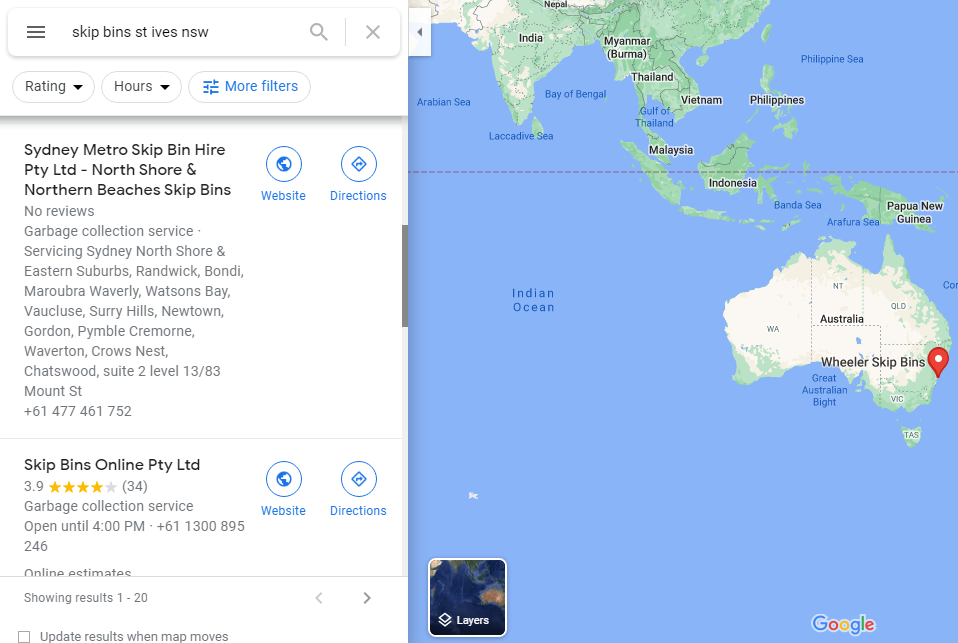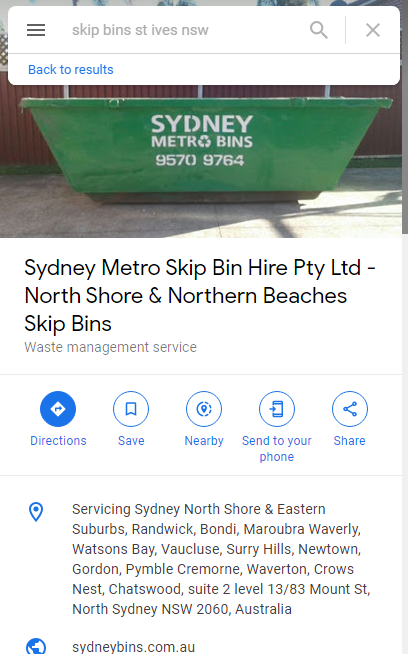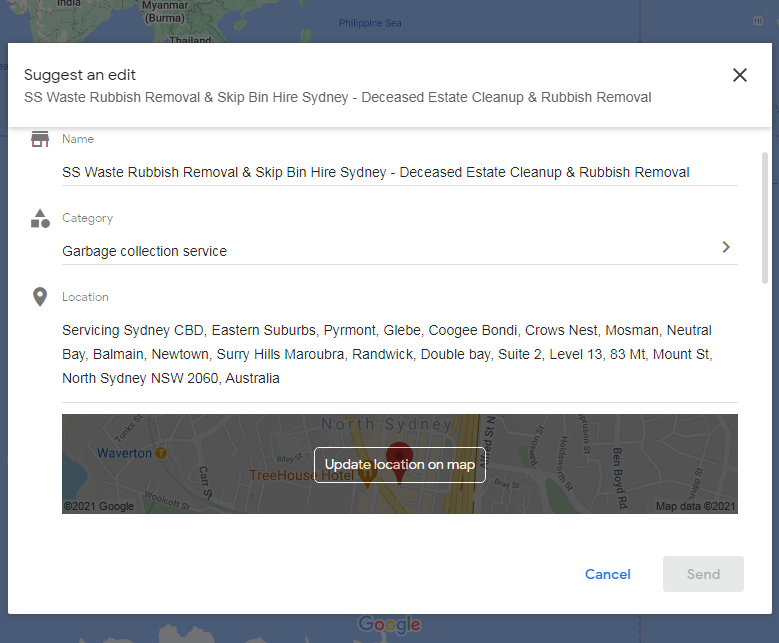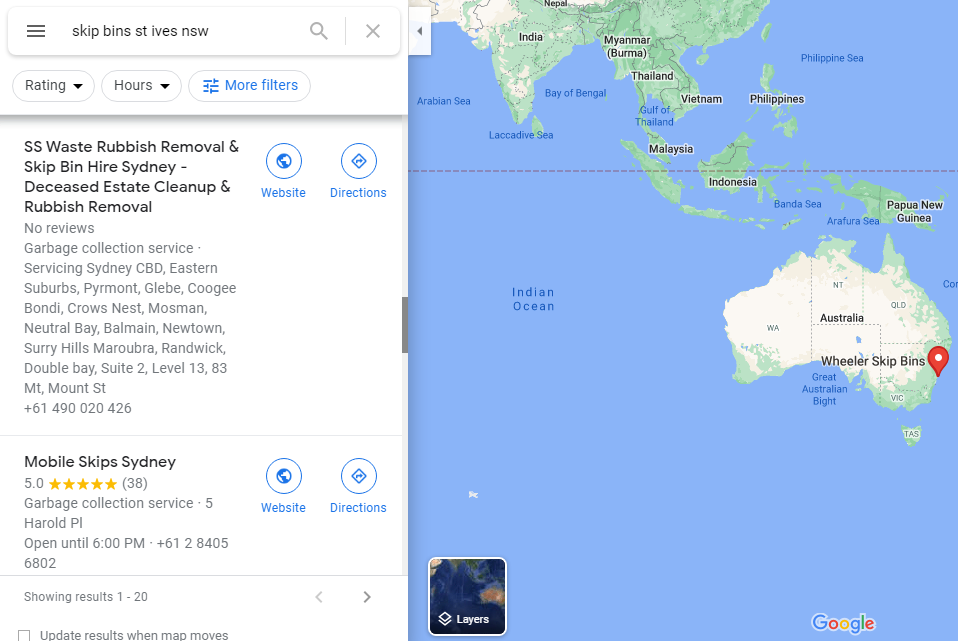I may have seen this before, but it must not have registered with me until I saw it more than once on the same page of Google Maps results. In any event, it’s new to me. Below is an example. Do you see what’s out of place?

Is it the plump business name? Nope. Keyword-stuffing like that is omnipresent. What else looks odd?

That “service area” – Holy Moses! Has Google started displaying in Google Maps all the cities in your GMB service area? That’s what I thought at first, but notice: the cities are in the “address” field.

The street address is in the address field, but so are 12 cities (known as “suburbs” in Australia) and communities the business serves.
That isn’t a fluke, because on the very same page of Google Maps results is another GMB page with the same rigging, though both pages appear to belong to the same company.

That city-stuffed “address” field only shows up in Google Maps, as in at google.com/maps/search. It does not show up if you just type the query into Google and click on the map, or click on the “View all” link under the map, to pull up the local finder.
So, as with so many other things Google lets slide, it appears you can cram your service area into the address field of your GMB page. Does it help rankings or help the business rank in a wider area? I don’t know, though I would guess it doesn’t. Those particular GMB pages don’t rank at the top of the heap for that query, but they’re far from the bottom: they’re #4 and 9, respectively, as of this writing. Not bad. They’re in the mix. I could see how that stuffed address field might get more clicks, because the misplaced “service areas” blob is eye-catching. But is that possible benefit worth increasing the chances of a suspension? Probably not.
I wouldn’t suggest stuffing the address field with city names (or anything else), but I’ll admit I admire the fancy footwork required to do what that business did.
Speaking of which, how did they do that?
My educated guess is they verified the GMB page at the appropriate address, waited a while (and maybe worked on their citations), and then later went to work on the 1st “address” field in the GMB dashboard. It’s possible that didn’t even trigger re-verification by postcard. If it did trigger reverification, then the business owner must have been able to get the postcard sent to the first, correct version of the address (the one without all the city names), possibly in the way Joy Hawkins described here.
I might tinker around with this on my own GMB page (not a client’s) – just out of curiosity, and to see what’s involved.
How many times have you seen a GMB address field like that?
Has someone else written about it before? (If so, I’d like to give that person credit.)
Any part of it you’re curious about?
Leave a comment!

Leave a Reply